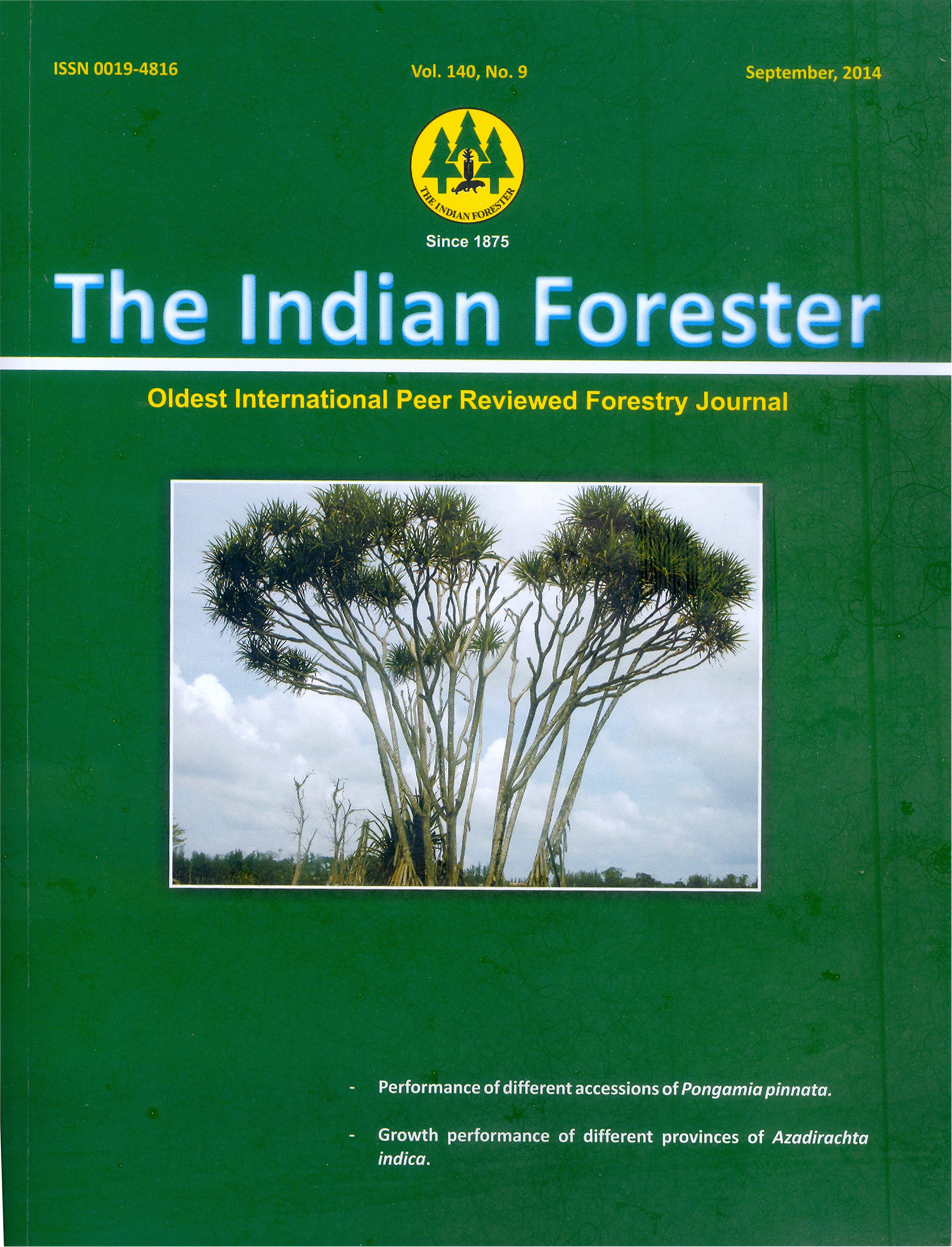Molecular Variations among Different Accessions of Jatropha Curcas L.
DOI:
https://doi.org/10.36808/if/2014/v140i9/52351Keywords:
RAPD, Accessions, Jatropha curcas L.Abstract
Molecular variations among different accessions 15 Jatropha curcas accessions were carried out. The RAPD analysis of accessions showed that the five decamer primers produced a total of 27 scorable bands. Out of them 18 were polymorphic and 9 were monomorphic. The percentage of polymorphism ranged from maximum 77.78 % showed by OPF-08 to a minimum of 60.00 % by OPF-3, OPF-5 and OPF-10. Lowest genetic similarity (0.333) was observed between accessions No. 9 and 1 and 9 and 3 and the highest genetic similarity (1.000) was among various accessions including 2, 4, 5, 6, 7, 10, 11, 12, 13, 14 and 15. The dendrogram of fifteen accessions reflected that at a similarity level of 70.00 %, the accessions were divided in two clusters. The accession No. 9 was found in second cluster having minimum similarity within other accessions whereas rests of accessions were laid in first cluster.References
Avise (1994). Molecular Markers, Natural History and Evolution. Chapman and Hall, New York, pp. 1–5.
Behera T.K., Singh A.K and Staub J.E. (2008). Comparative analysis of genetic diversity in Indian bitter gourd (Momordica charantia L.) using RAPD and ISSR markers for developing crop improvement strategies. Scientia Horticulture, 115 : 209-217.
Faseela K.V. and Joseph S. (2007). Molecular characterization of amaranth land races and assessment of interspecific relationships among Amaranthus spp. (L.) using RAPD markers. Indian J. Genet., 67 (1): 12-17.
Heller J. (1996). Physic nut Jatropha curcas L. Promoting the conservation and use of underutilized and neglected crops 1. Institute of Plant Genetics and Crop Plant Research, Gatersleben/ International Plant Genetic Resources Institute Rome.
Joshi R.C. (2005). Bio-diesel - Alternative source. Employment News. Volume No. XXX(17): 1 - 48.
Joshi S.P., Prabhakar K.R. and Gupta V.S. (1999). Molecular markers in plant genome analysis. Plant Molecular Biology Group, Division of Biochemical Sciences, National Chemical Laboratory, Pun, India.
Keim P., Olsen T.C. and Shoe Maker R.C. (1988). A rapid protocol for isolating soybean DNA. Soybean Genetics Newsletter, 15: 150-152.
Rohlf F. J. (2004). NTSYS-pe Numerical Taxonomy and Multivariate Analysis System version 2.2, Exeter Software, Applied Biostatics, New York.
Shiran B., Amirbakhtiar N., Kiani S., Mohammadi., Sayed-Tabatabaei B.E. and Moradi H.(2007). Molecular characterization and genetic relationship among almond cultivars assessed by RAPD and SSR markers. Scientia Horticulture, 111: 280-292.
Slatkin Montgomery (1987). Gene flow and the geographic structure of natural populations. Science, 236: 787–792.
Sneath P.H.A. and Sokal R.R. (1973). Numerical Taxonomy. The principle and practice of Numerical Classification. W.H. Freemon and Company, San Francisco.
Surkhosh A., Zamani Z., Fatahi R and Ebadi A. (2006). RAPD marker reveal polymorphism among some Iranian pomegranate (Punica granatum L.) genotypes. Scientia Horticulture, 111: 24-29.
Syamkumar S. and Sasikumar B. (2007). Molecular marker based genetic diversity analysis of Curcuma species from India. Scientia Horticulture, 112 : 235-241.
William J.G.K., Kubelik K.J., Livak K.J., Rafalski J.A. and Tingey S.V. (1990). DNA polymorphisms amplified by arbitrary primers are useful genetic markers. Nucleic Acid Res., 18: 6531-6535.
Zoghlami N., Chrita I., Bouamana B., Gargouri M., Zemni H., Ghorbel A. and Ahmed M. (2007). Molecular based assessment of genetic diversity within Barbary fig (Opuntia ficus indica (L.) Mill.) in Tunisia. Scientia Horticulture, 113: 134-141.
Downloads
Downloads
Published
How to Cite
Issue
Section
License
Unless otherwise stated, copyright or similar rights in all materials presented on the site, including graphical images, are owned by Indian Forester.





